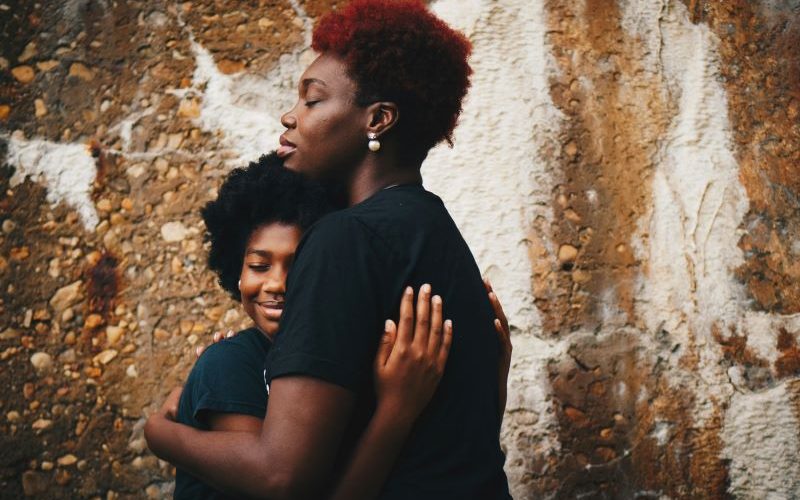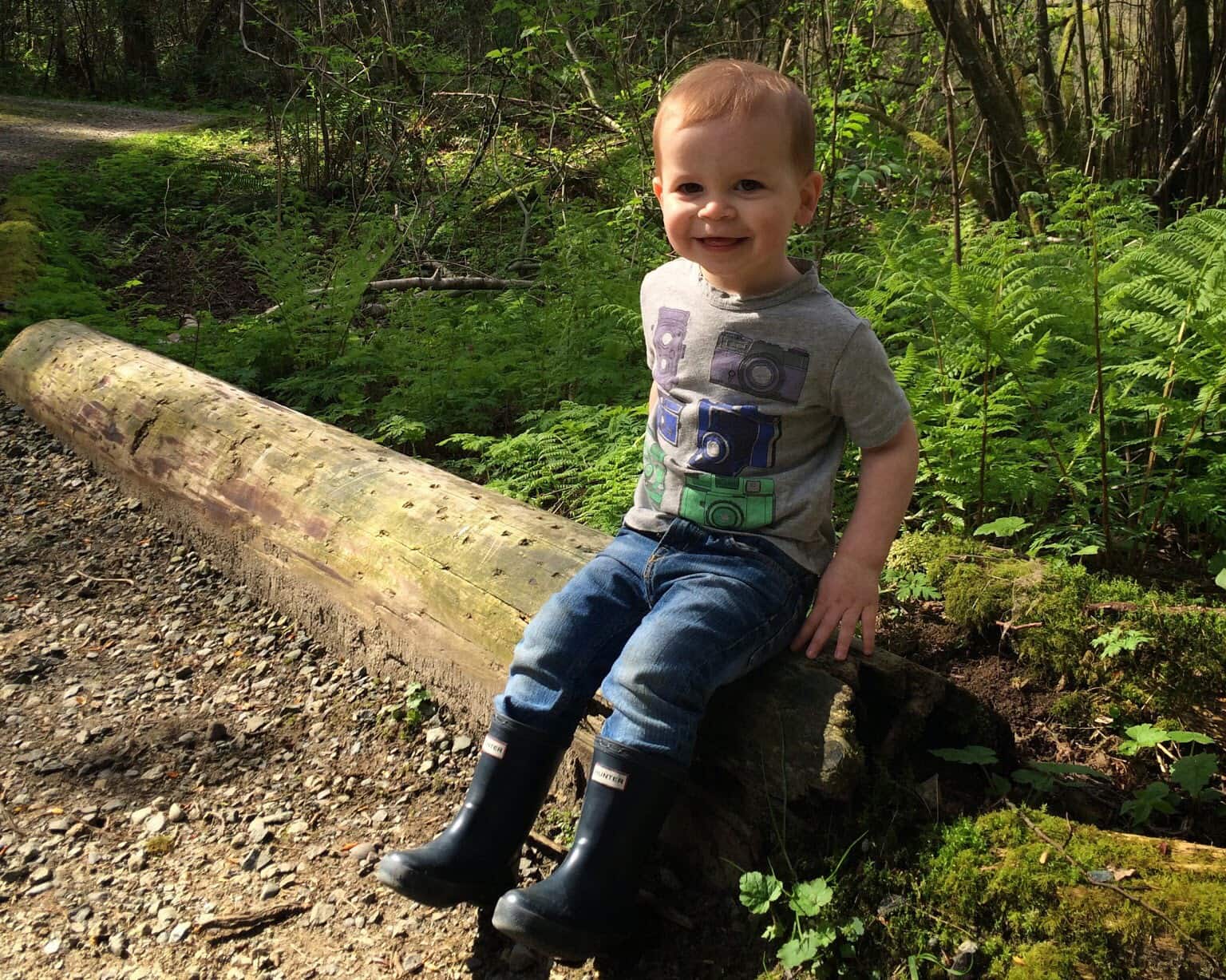Table of Contents
Coregulation is the hottest word in parenting right now. But what is it? And is it worth the hype?
For years, parenting experts, psychologists, and responsive parenting advocates have touted the importance of self-regulation skills. So, what is coregulation all about?
Think of coregulation as the precursor to self-regulation. Coregulation is grounded on the connection you have with your child in order to help them through emotional situations.
What Is Coregulation?
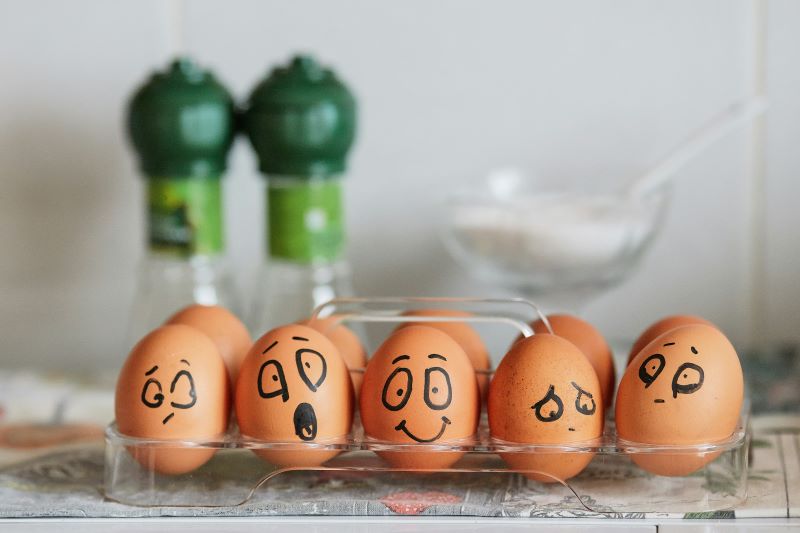
Have you ever cuddled your toddler after a tantrum or held your teen’s hand after a fight with a friend? Whenever you’ve offered comfort and connected with your child during a difficult moment, you have been helping them coregulate.
Coregulation is letting your child borrow your calm while supporting their self-soothing skills. Kids only start developing the skills they need to effectively manage their emotions at about age seven. Until then, they rely on you to help them navigate big feelings. Research shows that coregulation helps facilitate self-regulation and is a crucial step in learning to manage emotions in early childhood.
What does it mean to be “regulated,” though?
When kids are regulated, they experience an appropriate level of emotion for the situation. For example, your child might feel disappointed that they lost a baseball game but move on after accepting defeat.
However, dysregulation happens when kids struggle with their emotions and experience a bigger reaction than the situation warrants. If you have ever been on the receiving end of a tantrum from a toddler who can’t put on their shoe, then you know all about dysregulation.
Dysregulation can send kids into fight, flight or freeze mode. Coregulation helps dysregulated kids move into a more regulated state.
What Does Coregulation Look Like?
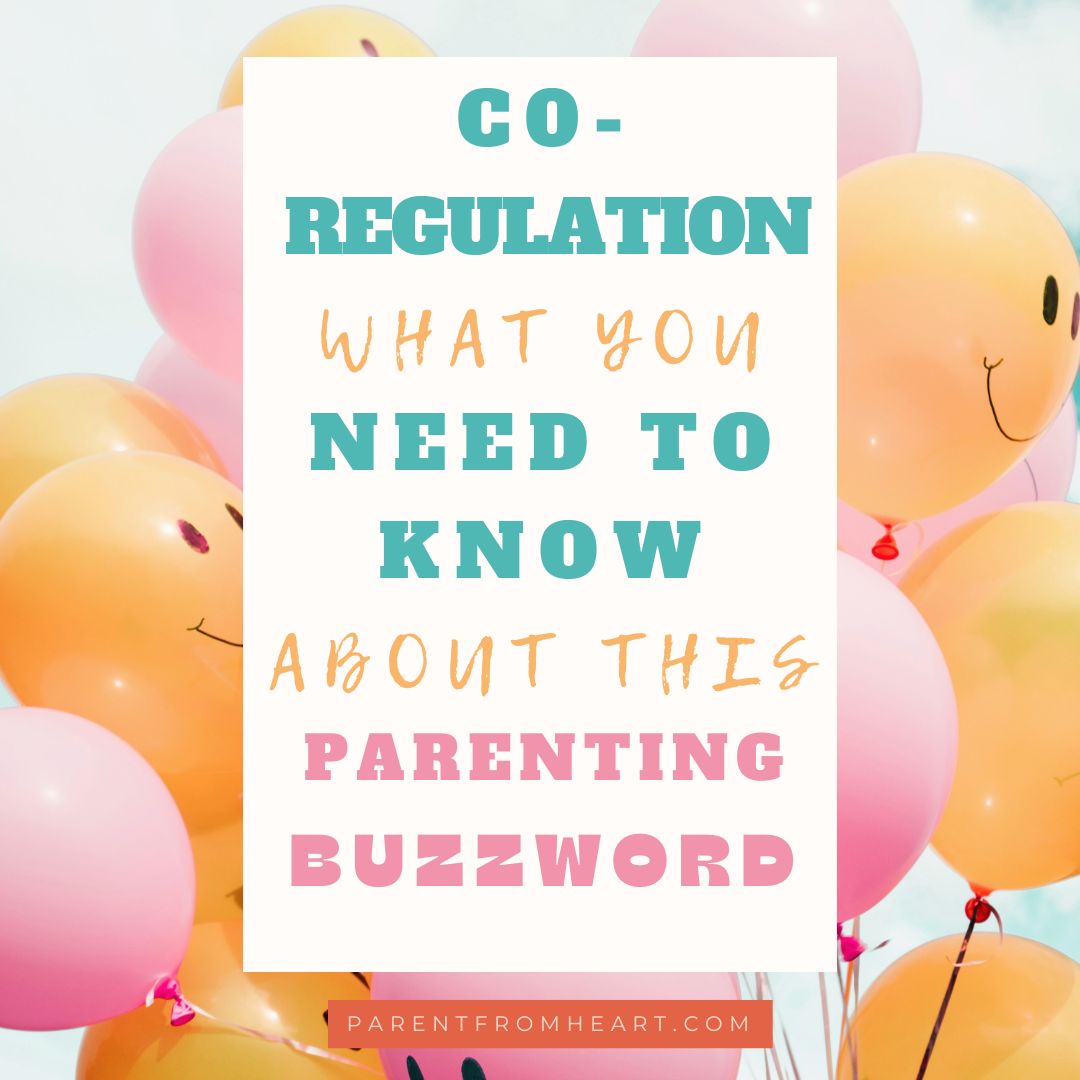
Coregulation starts with self-aware adults. You need to be cognizant of your body language, facial expressions, and tone. When your child is spiraling, you want to be as calm as possible.
There is a good chance that your child can’t tell you how they are feeling, so you need to be an emotion detective.
Start by describing what you see.
“Hey, sweetie, I can see that you’re feeling really frustrated right now. I notice that your face is scrunched up, and your fists are clenched. It seems like you’re having a hard time with that puzzle.“
Naming the emotions you’re observing can help reduce some of your child’s overwhelm. It can also help them understand how the emotion feels in their body, which grounds them in the moment.
Coregulation involves validating your child’s emotions.
“It’s okay to feel frustrated when things are challenging. Let’s take a deep breath together and try to figure it out. Remember, it’s okay to ask for help if you need it.“
Labeling and validating your child’s emotions during coregulation teaches them how to do it for themselves as they develop self-regulation skills.
Why Is Coregulation Important?

Coregulation is important because it makes your child feel safe and secure as they learn to manage their emotions independently.
Coregulation is often subtle, such as a hug, hand-holding, or a back rub. You might not even realize that you are helping to keep your child balanced by connecting with them. However, those seemingly casual interactions are vital to the self-regulation process.
When you are there during your child’s big feelings, you allow them to “vent” to someone they have a secure attachment with. You are the calm in their storm as they process emotions. When you are calm and connected during tense situations, you model healthy emotional regulation.
Kids need a good model of coregulation to self-regulate.
Coregulation Strategies for Parents
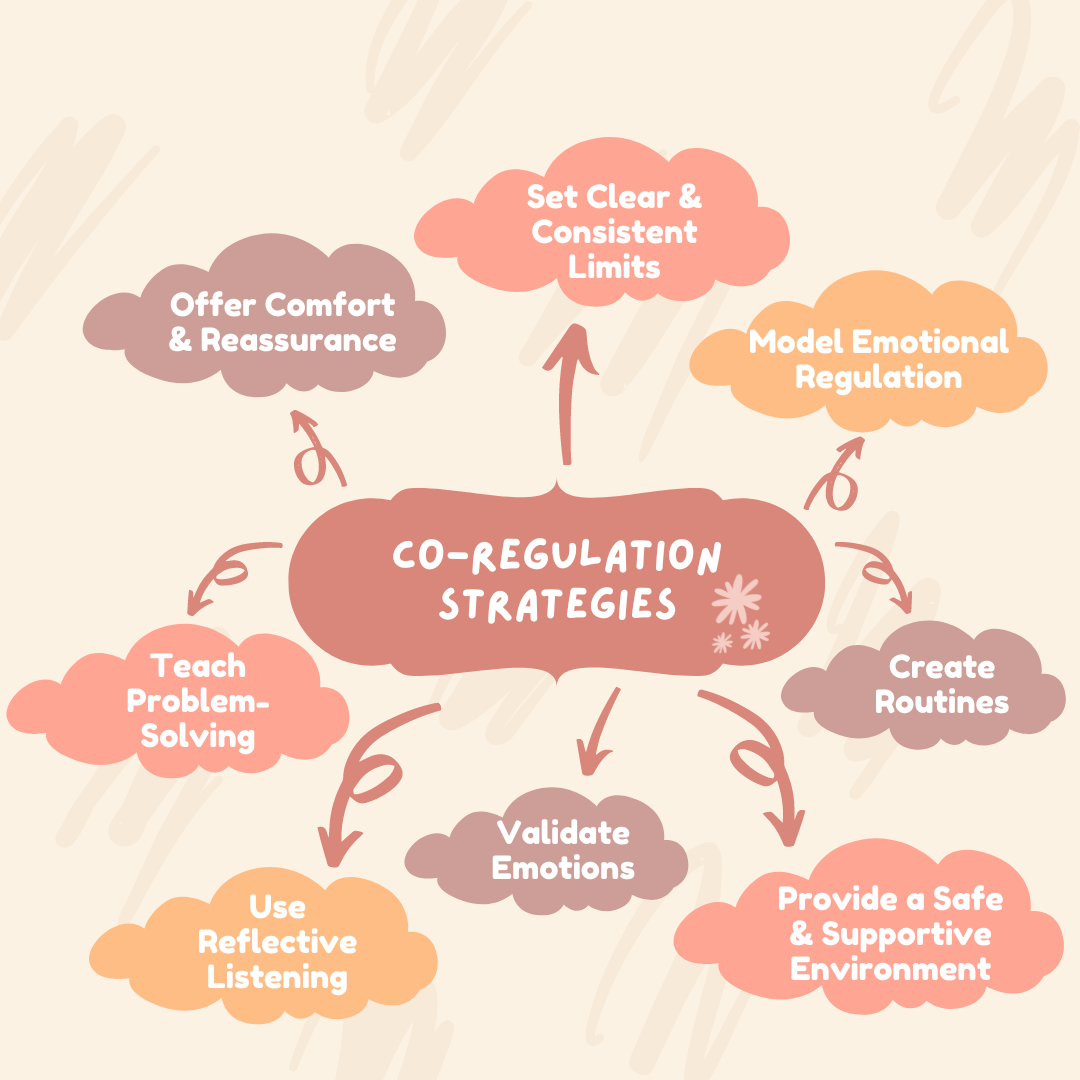
Although you have probably been regulating your child without knowing it, here are some strategies for being more mindful.
Model Emotional Regulation
Your kids learn by watching you. Model calmness, patience, and problem-solving skills in your own behavior to show them healthy ways to cope with emotions. Keeping your cool can be difficult, especially when you are feeling triggered. But even if you are dysregulated, you can still model how to respond rather than react.
If you are triggered, say, “I’m feeling angry, and I need a few minutes to calm down. I will come back when I can control my emotions better.”
You are not a robot. Trying to coregulate your kids and regulate yourself can be extremely challenging when dealing with adult pressures like work and finances. You are allowed to step away and calm down before dealing with your child.
Provide a Safe and Supportive Environment
Create a safe and nurturing environment where your child feels comfortable expressing their emotions. That means you have to check your reactions, including your tone and body language.
Let them know that all emotions are valid and that you are there to support them. Your child must understand that all feelings are valid, but that doesn’t give them the right to react hurtfully or disrespectfully. Having boundaries around emotional reactions is part of creating a safe and supportive environment.
For example, your child can feel angry when you don’t allow them to have cookies before bed. Anger is a normal and healthy emotion. However, hitting you or throwing things is not an acceptable reaction.
Validate Emotions
Validate your child’s feelings by acknowledging and accepting them without judgment. This is where describing what you see is such a powerful strategy. Rather than imposing your perception of the situation, you simply explain the behavior you see. Using descriptive words and naming emotions keeps your observations neutral.
Let them know that feeling upset, scared, or angry is okay, and offer empathy and understanding. Be mindful of your tone when you validate emotions. You don’t want to sound condescending.
Also, if you ever want to use the word “but,” don’t. For example, “I can see you’re upset about missing the party, but you know our rules about going to places we don’t know.” Focus on validating the emotion first. You can hold firm on your boundaries, but your child needs to know that you accept their feelings and are there to help process them.
Use Reflective Listening
Practice active listening by reflecting back your child’s feelings and experiences. Thinking of yourself as a sounding board.
For example, if your child says, “I’m so mad that Casey didn’t invite me to her birthday party. I thought we were close, but now I feel left out.” A reflective answer could be, “It sounds like you’re feeling hurt and disappointed because you weren’t invited to Casey’s birthday party. That must be really tough, especially when you thought you were close.“
This helps them feel heard and understood but also encourages them to share more because they don’t feel judged by you.
Offer Comfort and Reassurance
Provide physical comfort such as hugs, cuddles, or holding hands to help soothe your child when they are upset. Physical comfort reassures them that they are safe and loved.
Physical touch is one of the main ways to soothe a baby and help regulate its nervous system. Toddlers still want physical comfort, but you can also start naming and validating emotions. Coregulation for toddlers can look like calmly redirecting them or engaging in movement.
As kids get older, they start to learn what they like and don’t like so they can be more active participants in the coregulation process. Their initial participation is what helps them develop the skills to regulate on their own.
Set Clear and Consistent Limits
Establish clear and consistent boundaries for behavior while maintaining empathy and understanding. This helps kids feel secure and understand what is expected of them. Boundaries help your child feel safe and also help them learn about responsibility and self-control.
Teach Problem-Solving Skills
Help your child develop problem-solving skills by brainstorming solutions together when they encounter challenges. Encourage them to think through consequences and consider different perspectives.
For example:
“I see that you’re feeling frustrated because you can’t find your favorite toy. Let’s think about where it might be. Where was the last place you remember playing with it?“
Follow up with:
“While we’re searching, let’s also think about other places it could be. Maybe it got moved or accidentally put away somewhere. Can you think of any other places you might have left it?“
Guiding your child through the process of solving the problem of the missing toy helps them develop critical thinking skills. It empowers them to find solutions to their own challenges.
Create Predictable Routines
Establish predictable routines and rituals to provide structure and stability for your child. Predictability can help reduce anxiety and promote feelings of safety and security.
A familiar routine and rhythm can help your child get back on track after being dysregulated. Routine provides structure and easy transitions that help keep your child balanced throughout the day.
Coregulation vs. Self-Regulation
A self-regulation definition encompasses your ability to stay balanced when you feel off-kilter. It’s about understanding yourself and being aware of internal and external cues. Self-regulation is done independently, while coregulation happens in collaboration.
Kids develop self-regulation skills at their own pace. Coregulation offers support and connection until they have the skills to manage their emotions.
There are various components of self-regulation, all based on a foundation of co-regulation.
- Emotional regulation: Understanding your feelings and why you feel that way. The ability to regulate your emotions determines whether you will respond mindfully or react unconsciously to a situation.
- Behavioral regulation: The ability to control your actions in the face of overwhelming emotions. For kids, this may be the ability to act in socially appropriate ways (like not biting another kid in class.)
- Cognitive regulation: Being able to plan and work toward a long-term goal. Cognitive regulation is the last to develop and takes practice.
Coregulation and self-regulation are crucial for happy, well-adjusted kids. The ability to find emotional balance makes kids feel more competent and confident. It also helps them navigate relationships and learn how to cope with the highs of success and the lows of failure.
Emotional Regulation Activities for Kids
Here are some nervous system regulation techniques to have up your sleeve.
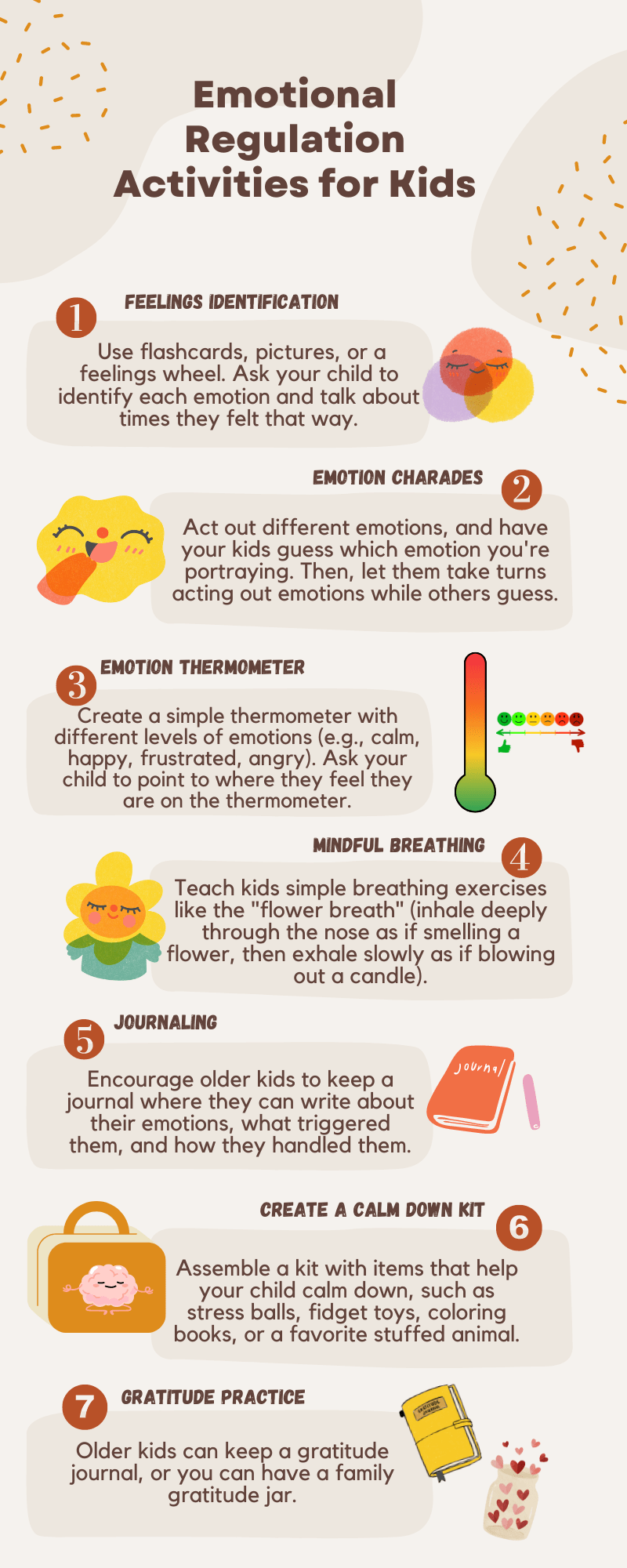
Feelings Identification: Use flashcards, pictures, or a feelings wheel. Ask your child to identify each emotion and talk about times they felt that way. This activity introduces them to a wide range of emotions and gives them a better emotional vocabulary.
Emotion Charades: Act out different emotions, and have your kids guess which emotion you’re portraying. Then, let them take turns acting out emotions while others guess. This activity helps them see how different people express emotions.
Emotion Thermometer: Create a simple thermometer with different levels of emotions (e.g., calm, happy, frustrated, angry). Ask your child to point to where they feel they are on the thermometer. This activity is great in the afternoon when after-school meltdowns often happen.
Mindful Breathing: Teach kids simple breathing exercises like the “flower breath” (inhale deeply through the nose as if smelling a flower, then exhale slowly as if blowing out a candle). Breathing exercises help ground your child and force them to pause and redirect their focus.
Journaling: Encourage older kids to keep a journal where they can write about their emotions, what triggered them, and how they handled them. A journal can be a safe space for them to explore their feelings and engage in self-reflection.
Create a Calm Down Kit: Assemble a kit with items that help your child calm down, such as stress balls, fidget toys, coloring books, or a favorite stuffed animal. I have a kit for my kids, customized to suit their emotional needs. The kit is handy in the car, but we also have a calm-down corner at home. This is a space where the kids can go when they need a balance break.
Gratitude Practice: Did you know that feeling grateful reduces anxiety and changes the brain’s neural pathways, making you happier? Older kids can keep a gratitude journal, or you can have a family gratitude jar. In our home, we have a dinner-time gratitude practice where we each say something we are grateful for.
Parental Self-Regulation

Dysregulated children can’t regulate with a dysregulated parent. Remember, your child needs to borrow your calm until they have the skills to find their own.
It’s a lot of pressure as a parent to accept and validate your emotions in order to help your child. Sometimes, life feels overwhelming, and you also want to throw a tantrum. Trust me, I’ve been there (often!).
5 Simple Strategies for Parents
- Practice Mindfulness: Ground yourself in the present moment. I like to use my senses to keep me mindful. When faced with a triggering situation, I will pause and notice one thing I can feel, taste, smell, hear, and see. It’s a simple exercise but immediately pulls my focus into the here and now.
- Recognize Triggers: Identify your triggers and stressors that may lead to emotional dysregulation. You might not be able to avoid them, but you can look at them with curiosity and discover why they cause such a reaction.
- Take Breaks: When you feel overwhelmed or on the verge of losing control, give yourself permission to take a break. Step away from the situation to regain your composure and perspective, even if it’s just for a few minutes. I use something called the “Power Pause.” We call it a “power pause” because it is a break that helps me regain my power rather than giving it to overwhelming emotions.
- Use Positive Self-Talk: Monitor your internal dialogue and replace negative self-talk with positive affirmations and self-compassion. As parents, we are way too hard on ourselves. We’re all doing the best with what we have. Your kids don’t need a perfect parent, just a present and connected one.
- Set Boundaries: Establish healthy boundaries to protect your time, energy, and emotional well-being. I’m not just talking about social commitments or work, but also in your home. Get your kids involved with chores and ask them to respect your space. For example, I like to read my book while having coffee on a Saturday morning. My family knows that those 30 minutes (sometimes 45 if it’s a good book) are extremely important to me, so no one interrupts me, and all requests are directed to Dad.
Is Coregulation Worth the Hype?
Yes! Coregulation lays the foundation for healthy self-regulation as your kids grow and develop. But don’t overthink it! Coregulation shouldn’t be one more thing to add to your parenting to-do list or feel guilty about. You’ve probably been doing it without even realizing it.
Instead of feeling the pressure of being responsible for your child’s ability to manage their emotions, focus on your feelings. Modeling self-regulation is one of the most valuable lessons you can teach your child. When you have self-compassion and validate and accept your feelings, you not only show your child it’s done, but you also have the capacity to help them do it.
Have you heard of coregulation? What are your go-to self-regulation hacks for staying calm in the face of your child’s big feelings? We would love to hear from you and offer other parents some helpful tips.







